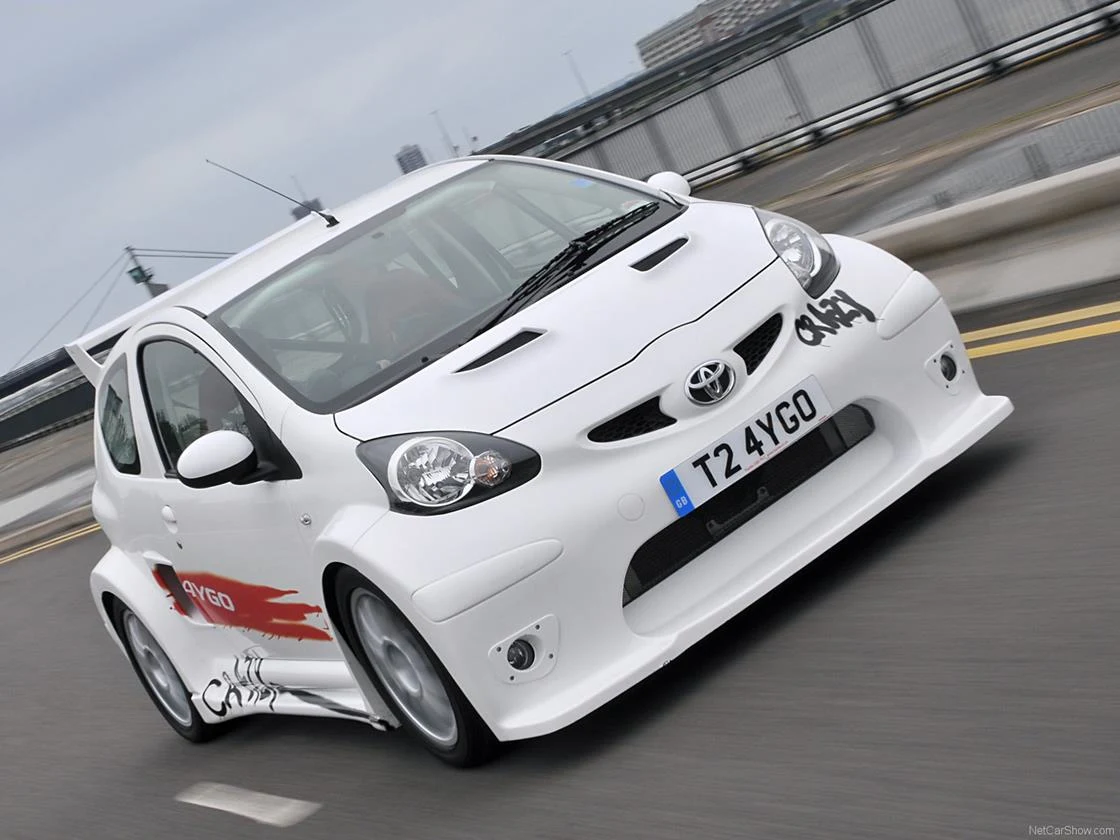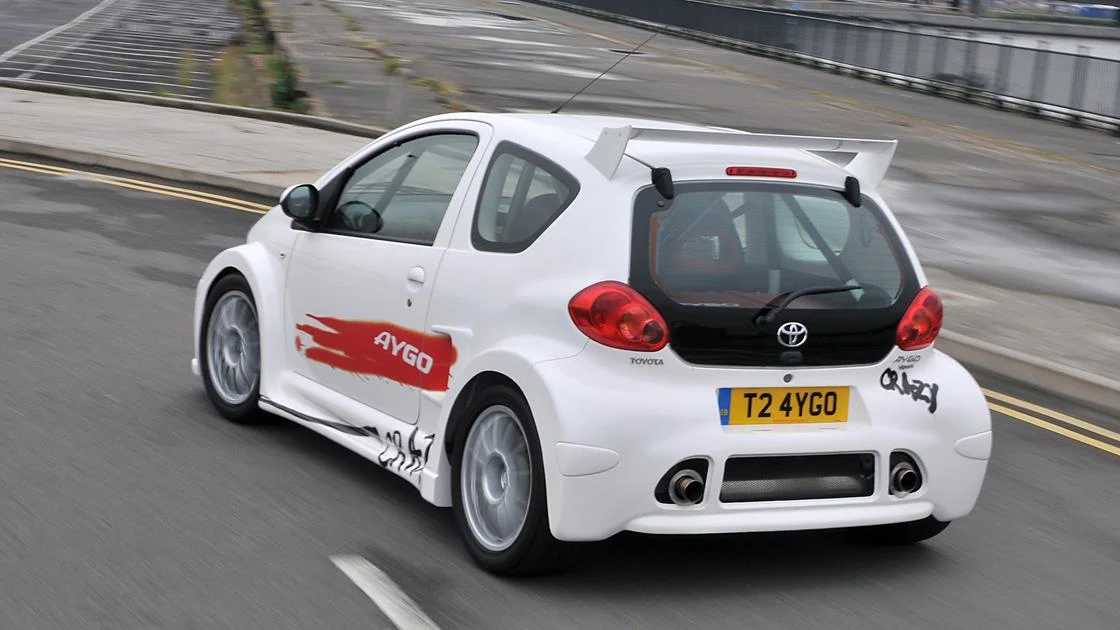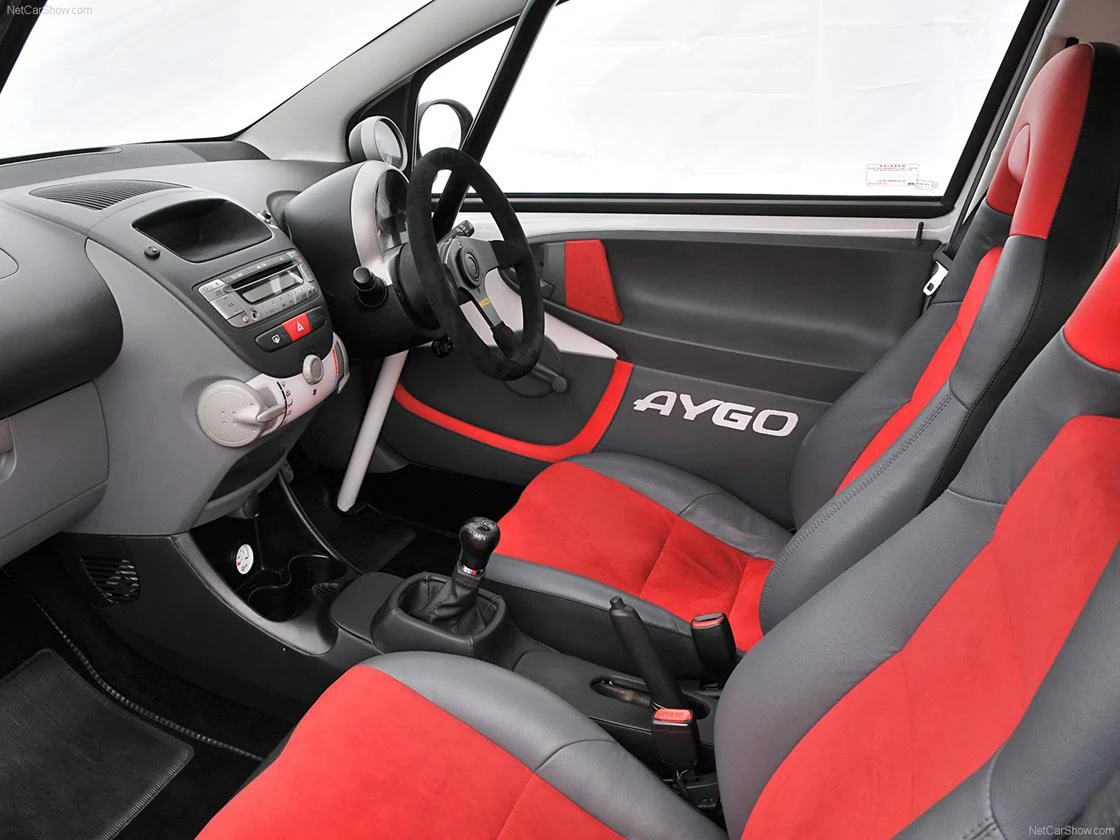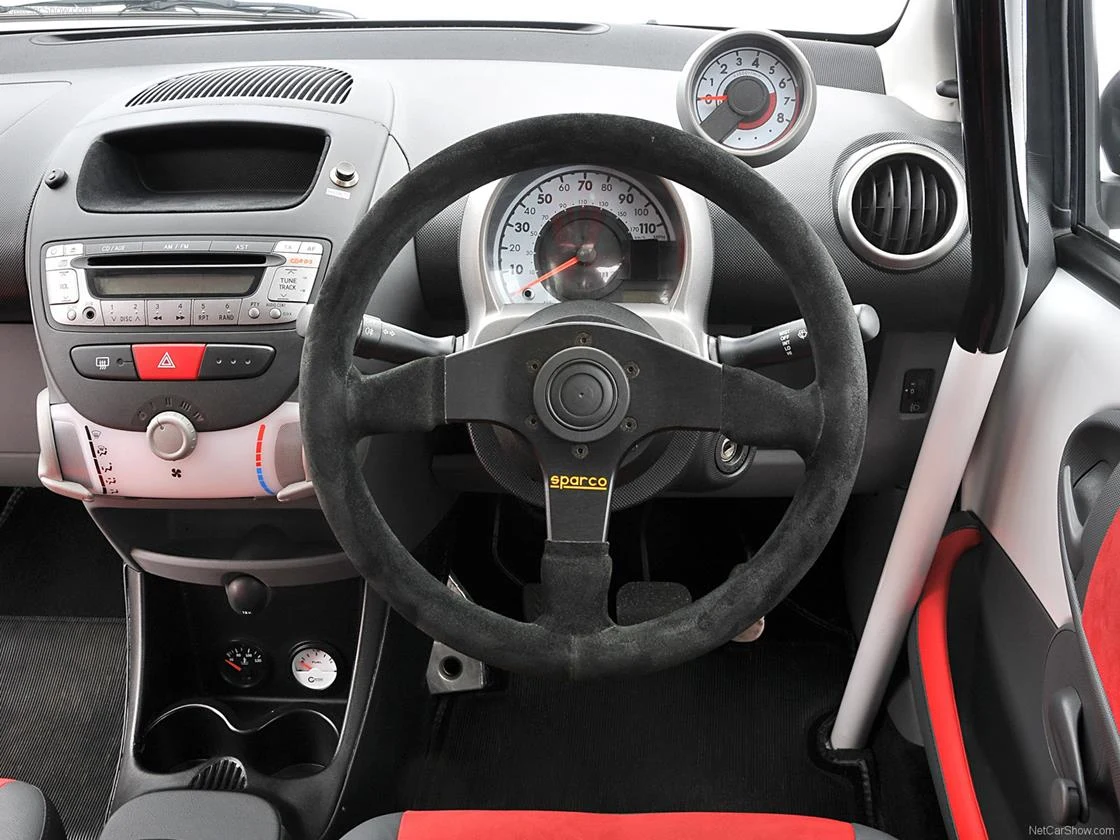13th Mar 2024
Wednesday One-Off: 2008 Toyota Aygo Crazy
by Collecting Cars
There are some automotive model names that immediately conjure exciting images when mentioned to enthusiasts: F40, Countach, 911, NSX, M5, and many more. However, mention the name ‘Aygo’ to keen drivers and you might be met with a vacant stare. Of course, it’s a highly successful and eminently practical modern city car that has been in production since 2005; but due to its very nature, it was never designed for the driving enthusiast market.
But, what if there was a way to transform the humble Aygo into a driver-focused hot hatch? That’s the question that Toyota put to its performance division, and the result was this week’s Wednesday One-Off: the 2008 Aygo Crazy.
This bespoke build started life as a standard car, which was then ‘reimagined’ with inspiration from Group B rally legends such as the Metro 6R4, the Renault 5 Turbo, and the Peugeot 205 Turbo 16. The aim was to produce a car that embodied the ‘joy of driving’, and first on the list of tasks was to strip the Aygo of its electronic convenience and safety aids, including the power steering, the brake servo, and the ABS.
As standard, the Aygo of this era came with a sensible 1.0-litre inline-three petrol engine, perfect for popping to the shops and pottering around city centres. Evidently that had to go if the Aygo was going to become a proper hot hatch. The replacement power unit chosen was a Toyota 1.8-litre VVT-i engine found in the final generation of the Celica and MR2 Roadster. Not content with the horsepower figures of the standard engine, the engineers tuned it with a Toyota Motorsport turbocharger conversion kit. The result was a powertrain capable of developing 197bhp, which would drive the rear wheels via a five-speed manual gearbox taken from the MR2.
This larger engine would, unsurprisingly, not fit into the standard Aygo’s diminutive engine bay. The solution was effortlessly simple: pull out the rear seats and put the new motor in their place.
With such a substantial power increase, the Aygo required a number of supporting chassis and engine ancillary upgrades, which included a bespoke cooling system, a new and enlarged front-mount aluminium radiator, MacPherson strut front and rear suspension, and adjustable Tein dampers for more dynamic performance.
Inside, most of the structure was carried over, but it was given a notable overhaul. Chief among these was the full roll cage, as well as an Alcantara-trimmed Sparco steering wheel, a separate speedometer-mounted rev-counter, and subtle temperature and fuel gauges fitted in the lower centre console. The purpose-built seats and door cards were finished by specialist coach trimmers O’Rourke in black and red leather and Alcantara, with large white ‘Aygo’ lettering on the door cards. The new engine sat directly behind a newly installed mid-ship firewall and was boxed in with red leather-trimmed panelling.
In order to keep the Aygo Crazy more planted, the front and rear tracks were increased by an extra inch over the standard model. This meant that the bodywork would need to be altered, and the Toyota team went all out to make the model look as mad as its name suggested. The wheel arches were extended to accommodate the large 17-inch alloys and 225/45 tyres, a redesigned front bumper with central air dam was installed, dramatic side skirts were added, and a custom vented bonnet replaced the original.
Large air vents were cut into the rear quarter panels just before the wheel arches, which helped to funnel cold air into the engine bay. The rear bumper was also revised so that it blended seamlessly with the much wider arches, giving the Aygo Crazy some serious hips. Last but not least, a functional carbon-fibre rear wing was installed above the rear window to aid downforce, which was taken straight from Toyota’s 200mph race cars found in the American Champ Car series.
Altogether the Toyota technicians had managed to take a small and relatively unremarkable car and transform it into a squat and muscular looking compact hot hatch that weighed just over 1,000kg, and was capable of launching from 0-60mph in 6.0 seconds.
While many enthusiasts would no doubt have loved Toyota to find a way to put this pocket rocket into production, it remains a completely unique car. Built at a reported cost of close to £100,000, it remains carefully stored and maintained as part of the marque’s heritage collection. While the Toyota GR Yaris could in many ways be seen as the spiritual successor to the Aygo Crazy, it will of course never quite match the wonderfully unhinged nature of this ludicrous one-off.












Have your say!